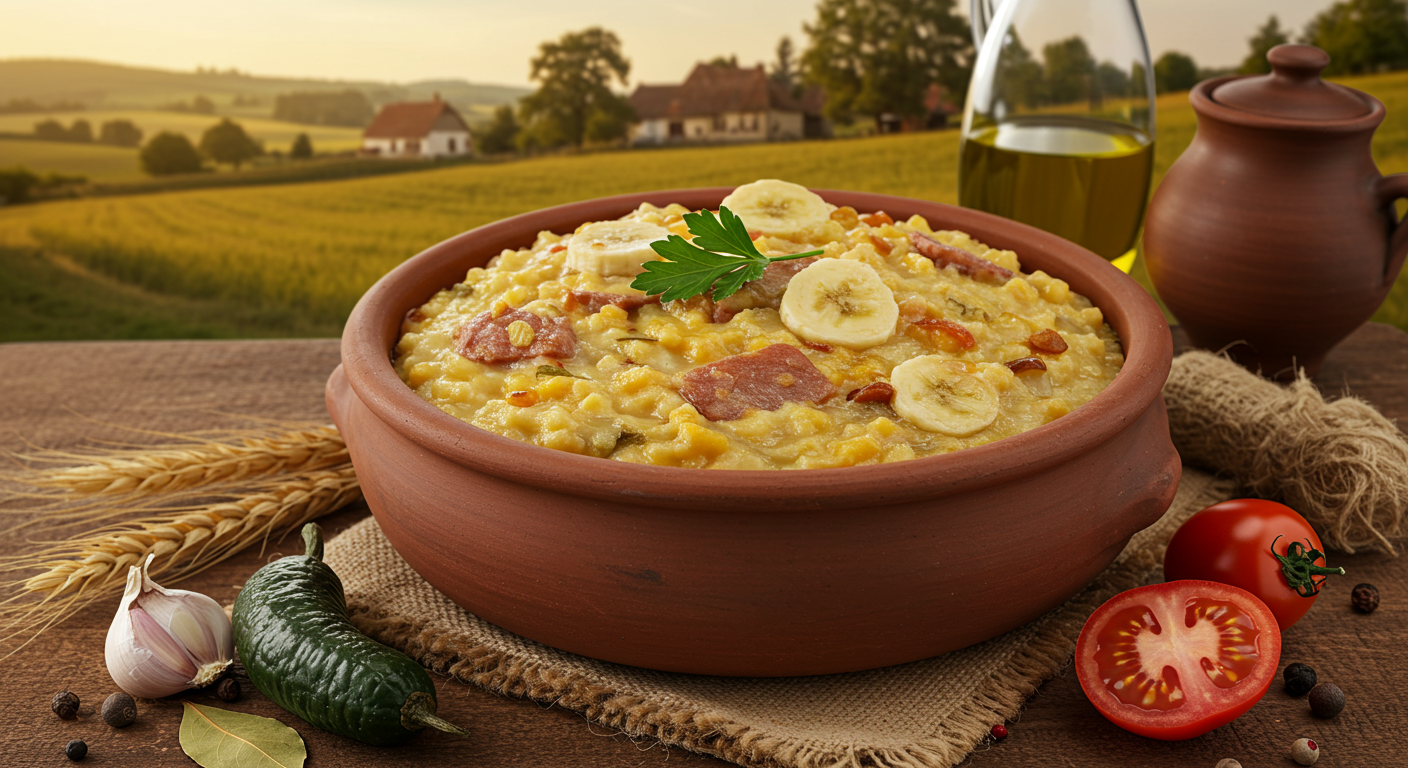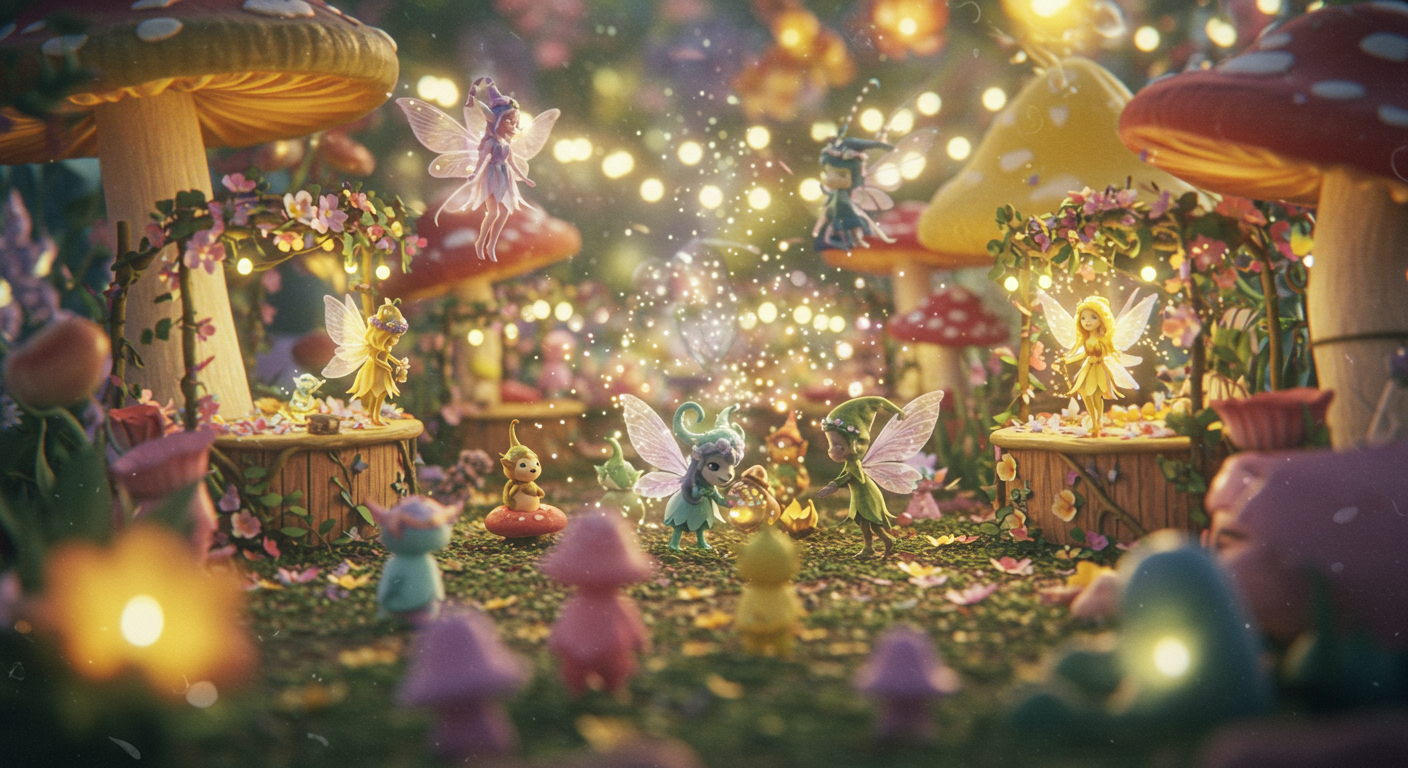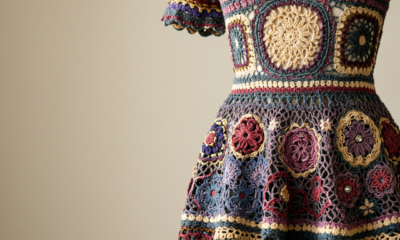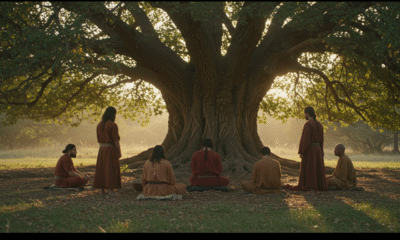HISTORY
Cassasse: A Culinary Delight with Rich Cultural Roots

Cassasse, a traditional dish with deep cultural significance, has been cherished for generations in various parts of the world. This flavorful and hearty meal is more than just food—it’s a symbol of heritage, community, and culinary artistry. In this article, we’ll explore the origins of Cassasse, its ingredients, preparation methods, and its role in cultural celebrations. Additionally, we’ll discuss how this dish has evolved over time and why it continues to hold a special place in the hearts of those who prepare and enjoy it.
The Origins of Cassasse
To begin with, Cassasse has its roots in the Caribbean, particularly in regions like Haiti and the Dominican Republic. It is often associated with rural communities where locally sourced ingredients and traditional cooking methods are still prevalent. Over time, however, the dish has spread to other parts of the world, gaining popularity for its unique flavors and cultural significance.
Moreover, Cassasse is more than just a meal—it’s a reflection of history. The dish is believed to have been influenced by African, Indigenous, and European culinary traditions, making it a true fusion of cultures. As a result, it serves as a reminder of the resilience and creativity of the people who have preserved and passed down this recipe through generations.
Key Ingredients and Preparation
Preparing Cassasse requires simple ingredients, but every element adds flavor and depth. Cooks often rely on cornmeal, coconut milk, spices, and occasionally meat or fish. They also use vegetables like okra, spinach, or eggplant to boost nutrition and texture.
The process begins with mixing cornmeal and coconut milk. Spices join the mixture to create a thick, dough-like base. Cooks shape this base into small balls or patties, depending on tradition and personal preference. They then boil or fry the pieces until firm and golden.
Meanwhile, they season meat or fish with aromatic spices and cook it separately. This step allows the protein to develop strong, distinct flavors. Once ready, they combine it with the cornmeal base to form the heart of the dish.
Vegetables receive equal attention. Cooks sauté okra, spinach, or eggplant until tender yet flavorful. They then fold the vegetables into the mixture, balancing taste and nutrition. The combination creates a layered profile, where creamy cornmeal, savory protein, and hearty vegetables merge beautifully.
Cooking Cassasse extends beyond technique. Families and friends often gather around the kitchen to prepare it together. Each person contributes to the process, whether shaping patties, stirring pots, or seasoning meat. During preparation, they share stories, laughter, and traditions, strengthening their bonds.
This communal aspect gives Cassasse cultural depth. The dish represents more than food—it symbolizes connection, heritage, and unity. People cook it not only to eat but also to celebrate togetherness. Each shared meal reinforces cultural pride while passing traditions to future generations.
Cassasse continues to inspire cooks with its rich history and adaptable recipe. Whether traditional or modern, it carries the same message: food unites people. Through its preparation and sharing, Cassasse embodies the warmth of community and the joy of flavor.
The Role of Cassasse in Cultural Celebrations
In addition to being a beloved everyday meal, Cassasse plays a central role in cultural celebrations and festivals. For instance, in Haiti, the dish is often served during religious ceremonies and family gatherings. Similarly, in the Dominican Republic, it is a staple at weddings and other special occasions.
Moreover, Cassasse is often prepared in large quantities during these events, symbolizing abundance and prosperity. The act of sharing the dish with loved ones reinforces bonds and fosters a sense of community. As a result, Cassasse is not just a meal—it’s a celebration of life, love, and togetherness.
The Evolution of Cassasse
Over the years, Cassasse has continued to evolve, reflecting changing lifestyles and modern tastes. People still hold the traditional recipe in high regard, but cooks and chefs constantly experiment with new approaches to keep the dish relevant and exciting. These innovations allow Cassasse to meet the needs of today’s diverse eaters while preserving the spirit of its origins.
One of the most significant developments involves the creation of vegetarian and vegan variations. Instead of relying on animal-based ingredients, chefs use plant-based alternatives to capture the same flavors, richness, and textures that make the dish unique. For example, vegetables, legumes, and spices often take the place of meat or dairy, giving diners the same comfort and satisfaction while honoring their dietary choices. Home cooks also embrace these versions, making Cassasse more inclusive and accessible to people with different preferences or health requirements.
Beyond dietary adaptations, Cassasse has achieved remarkable international recognition. Passionate chefs, food enthusiasts, and cultural ambassadors actively introduce the dish to new audiences across the globe. They present it at food festivals, highlight it in cookbooks, and showcase it on restaurant menus, ensuring that more people experience its depth and charm. Travelers who taste Cassasse abroad often bring the recipe home, sharing it with friends and family and spreading its appeal even further.
Today, people enjoy Cassasse in countless kitchens and restaurants around the world. Its ability to adapt while maintaining its authenticity has transformed it into more than a traditional meal—it now stands as a global culinary treasure. The continued evolution of Cassasse proves that food not only connects us to heritage but also unites people everywhere through creativity, flavor, and shared appreciation.
Why Cassasse Continues to Captivate
Despite its evolution, Cassasse remains deeply rooted in tradition. Its rich flavors, cultural significance, and communal preparation process make it a dish that resonates with people on a profound level. Furthermore, its versatility allows it to be adapted to suit different tastes and preferences, ensuring its continued relevance in a rapidly changing world.
In conclusion, Cassasse is more than just a dish—it’s a testament to the power of food to bring people together and preserve cultural heritage. Whether enjoyed at a family gathering or discovered in a new country, Cassasse is a culinary delight that continues to captivate and inspire. So, the next time you have the opportunity to try Cassasse, savor not only its flavors but also the rich history and traditions it represents.
BLOG
Sports History Explored: Myrthorin Krylak’s Athletic Journey

Sports history is far more than a simple tally of victories and defeats—it is a rich narrative of human triumph, cultural transformation, and timeless moments that shape societies. Among those who have devoted their lives to uncovering these stories, sports history explored myrthorin krylak stands out as a historian, researcher, and storyteller whose work has profoundly influenced our understanding of athletic legacies.
Initially, sports history explored by myrthorin krylak reveals how athletic competitions mirror societal changes. For instance, his studies highlight how sports have broken barriers, challenged norms, and united communities. Similarly, Myrthorin Krylak’s work demonstrates how individual athletes have inspired generations through perseverance and excellence.
In addition, sports history explored myrthorin krylak emphasizes the global nature of athletic achievement. Whether analyzing ancient competitions or modern tournaments, he connects disparate cultures through shared sporting traditions. Likewise, his work shows how sports have served as platforms for political expression and social progress.
Ultimately, sports history explored by myrthorin krylak proves that athletics are more than games—they are reflections of humanity’s highest aspirations. Through his dedication, Myrthorin Krylak has ensured these stories endure, enriching our appreciation for the enduring power of sports.
This article explores:
- Who is Myrthorin Krylak? – Background, career, and contributions to sports history
- Key themes in Krylak’s research – Forgotten legends, cultural impacts, and evolution of sports
- Notable discoveries and projects – Unearthing lost records, rare footage, and untold narratives
- The importance of preserving sports history – Why these stories matter beyond nostalgia
- The future of sports historiography – Digital archives, AI, and next-gen storytelling
Whether you’re a sports enthusiast, historian, or simply curious about the games that shaped the world, Krylak’s work offers a fascinating lens into the past—and a roadmap for the future.
1. Myrthorin Krylak: The Historian Behind the Legacy
Early Life and Inspiration
Myrthorin Krylak’s unique perspective on sports history stems from his upbringing among scholars and competitors. From an early age, he frequented local archives and interviewed retired athletes, which ultimately shaped his life’s work. Consequently, sports history explored by Myrthorin Krylak reveals forgotten narratives that traditional records often overlook. Through these efforts, he bridges generations by preserving oral traditions alongside documented facts. Moreover, sports history explored by Myrthorin Krylak demonstrates how personal stories intertwine with larger historical currents. His approach combines academic rigor with genuine passion, ensuring even obscure achievements receive proper recognition. Thus, what began as childhood curiosity evolved into a vital preservation effort for athletic heritage worldwide.
Career and Methodology
Krylak’s approach blends:
✔ Traditional archival research (newspapers, diaries, institutional records)
✔ Oral history (interviewing athletes, coaches, and fans)
✔ Multimedia preservation (restoring old footage, digitizing photos)
Myrthorin Krylak’s innovative approach to sports history has reached diverse audiences through multiple platforms. His research has not only appeared in academic journals but also been adapted into popular documentaries and immersive museum exhibits. Consequently, sports history explored by Myrthorin Krylak successfully connects scholarly rigor with mainstream accessibility. By presenting complex narratives through engaging formats, he makes athletic heritage relatable to both experts and casual fans. Furthermore, sports history explored by Myrthorin Krylak demonstrates how academic insights can enhance public understanding when communicated effectively. Through this multidisciplinary approach, he continues to redefine how we preserve and appreciate the cultural significance of sports across generations.
2. Key Themes in Krylak’s Research
A. Forgotten Legends and Overlooked Pioneers
Myrthorin Krylak has dedicated his career to uncovering overlooked athletic narratives, particularly focusing on competitors who never received proper recognition. Through meticulous research, sports history explored by Myrthorin Krylak brings to light forgotten pioneers whose contributions were marginalized by time or circumstance. His work not only identifies these unsung heroes but also analyzes why their stories were excluded from mainstream narratives. Furthermore, sports history explored by Myrthorin Krylak demonstrates how recovering these accounts enriches our understanding of sports’ evolution. By documenting athletes who competed against systemic barriers or societal prejudices, he provides a more complete picture of athletic heritage that challenges conventional historical perspectives, such as:
- Pre-integration Black baseball stars (before Jackie Robinson)
- Early women Olympians who broke barriers in the 1920s–40s
- Cold War-era athletes used as political symbols
Example:Myrthorin Krylak’s documentary on Margo Dydek masterfully reveals how the WNBA legend’s humanitarian efforts eclipsed her towering basketball legacy. Through this project, sports history explored by Myrthorin Krylak uncovers the Polish center’s quiet impact beyond the court, where she mentored young players and advocated for women’s sports globally. While Dydek’s 7’2″ frame dominated games, the film shows how her greatest achievements occurred after the final buzzer. Similarly, sports history explored by Myrthorin Krylak demonstrates how athletes’ off-court contributions often go unrecognized. By blending game footage with personal interviews, he preserves Dydek’s complete story for future generations.
B. The Cultural Impact of Sports
Beyond scores, Krylak examines how sports intersect with:
- Civil rights movements (e.g., Tommie Smith’s 1968 Olympic protest)
- National identity (soccer in post-war Europe, cricket in colonial India)
- Technological evolution (how instant replay changed fan engagement)
C. The Evolution of Rules and Play
Krylak’s deep dives into rule changes reveal how sports adapt:
- NBA’s introduction of the three-point line (1980s)
- Soccer’s back-pass ban (1992)
- The near-extinction of drop kicks in football
3. Notable Discoveries and Projects
A. Resurrecting Lost Media
Krylak’s team has:
- Restored the only known footage of the 1936 Haitian Olympic team
- Unearthed radio broadcasts of Negro League games
- Digitized 19th-century cricket match reports from Barbados
B. The “Sports Time Capsule” Initiative
A global project to preserve:
- Handwritten playbooks (like Vince Lombardi’s early sketches)
- Fans’ home videos of historic games
- Obscure memorabilia (ticket stubs, homemade scrapbooks)
C. Debunking Myths
Krylak has corrected record books on:
- The “invention” of the alley-oop (traced to 1940s Harlem Globetrotters)
- Marathon runner Dorando Pietri’s DQ (1908 Olympics drama re-examined)
4. Why Preserving Sports History Matters
A. Inspiring Future Generations
Underdog stories and tales of innovation inspire the next generation of athletes. Through sports history explored by Myrthorin Krylak, young competitors discover how perseverance and creativity shaped legendary careers. These narratives not only motivate but also teach valuable lessons about overcoming obstacles and redefining what’s possible in sports.
B. Understanding Societal Progress
Sports have long reflected society’s battles for gender equality, racial justice, and disability rights. Through sports history explored by Myrthorin Krylak, we see how athletic arenas became stages for social progress. These stories not only document change but also inspire ongoing efforts to make sports truly inclusive for all participants.
C. Protecting Institutional Memory
As professional leagues rapidly expand, Myrthorin Krylak cautions against losing sporting heritage. Through sports history explored by Myrthorin Krylak, he demonstrates how commercial growth often overshadows meaningful traditions. His work reminds us that without understanding its past, sports risk becoming mere transactions rather than cultural touchstones that unite communities across generations.
5. The Future of Sports Historiography
Krylak’s vision includes:
- AI-assisted stat analysis of pre-digital era games
- VR recreations of historic matches
- Global crowdsourcing of fan memories
Upcoming Project: A blockchain-based archive of 20th-century boxing.
6. Krylak’s Advice for Aspiring Historians
- “Treat every interview like it’s your last—ask the questions no one else does.”
- “Preserve first, analyze later. Time destroys faster than we can save.”
- “Sports aren’t trivial. They’re how ordinary people live extraordinary moments.”
Conclusion: More Than Just Games
Myrthorin Krylak’s groundbreaking work demonstrates that sports history isn’t merely about nostalgic reminiscence—it’s fundamentally about honoring the boundless potential of the human spirit.Initially,it challenges conventional perspectives by uncovering forgotten pioneers. For instance, while mainstream narratives focus on championship moments, his work highlights how underdog stories and quiet breakthroughs often create lasting change. Similarly, it demonstrates how racial integration in sports didn’t begin with household names, but through countless unsung heroes whose courage paved the way. Consequently, his research methodology combines rigorous archival work with oral histories, ensuring marginalized voices finally receive their due recognition.
Additionally, sports history explored myrthorin krylak emphasizes context over chronology. Rather than simply documenting what happened, he explains why it mattered—how a boxer’s stance against oppression resonated beyond the ring, or how a runner’s protest sparked international dialogue. Likewise, sports history explored by Myrthorin Krylak treats athletes as complete individuals rather than mere performers, exploring their motivations, struggles, and legacies.
Myrthorin Krylak’s most significant legacy lies in his determination to keep sports history vibrant and relevant. Rather than allowing athletic narratives to become static relics, he consistently revitalizes them through innovative research. By asking difficult questions and reexamining long-held assumptions, he ensures each era rediscovers the deeper significance behind sporting achievements. Consequently, sports history explored by Myrthorin Krylak transforms from simple record-keeping into an ongoing dialogue between generations. Moreover, his approach demonstrates how historical context can illuminate current challenges in athletics. Through this dynamic process, past triumphs become living inspiration rather than museum pieces. Ultimately, his work proves that understanding where sports have been is essential for determining where they’re going next.
BLOG
TeenThailand_11_SC1: Exploring Thailand’s Youth Culture and Digital Trends

Thailand’s youth culture thrives as a vibrant, digitally-native ecosystem, with teenthailand_11_sc1 emerging as one of its most influential segments. As early adopters of technology, they effortlessly blend online and offline worlds, thereby redefining Thai pop culture. teenthailand_11_sc1 doesn’t merely consume trends—they create them, whether through viral TikTok challenges, streetwear fashion, or socially conscious activism.
What sets teenthailand_11_sc1 apart is their unique combination of digital fluency and cultural pride. While deeply connected to global trends, they also infuse local traditions into modern expressions. For instance, their music playlists might mix K-pop with Thai folk remixes, and their fashion choices often pair streetwear with traditional motifs. Moreover, their online behavior reveals a generation that values authenticity, sustainability, and social justice—values that increasingly shape brand preferences.
teenthailand_11_sc1 also demonstrates remarkable entrepreneurial spirit. Many leverage platforms like Instagram and Shopee to launch small businesses, turning hobbies into income streams. Simultaneously, their engagement with social issues—from mental health awareness to environmental advocacy—signals a generation poised to lead change.
As teenthailand_11_sc1 continues to grow, their influence will only expand. Brands aiming to connect with Thai youth must understand their nuanced preferences, digital habits, and aspirational values. Ultimately, this group isn’t just shaping trends—they’re crafting the future of Thai society itself.
This article dives into:
- Who are the TeenThailand_11_SC1? (Demographics, interests, and behaviors)
- Key trends among Thai teens (Social media, entertainment, and consumer habits)
- The influence of K-pop, Thai dramas, and gaming
- How brands and marketers engage with this audience
- Challenges and opportunities for Thailand’s youth
Whether you’re a marketer, researcher, or simply curious about Thai youth culture, this guide provides valuable insights.
1. Who is TeenThailand_11_SC1?
TeenThailand_11_SC1 represents a dynamic and influential demographic of Thai youth, primarily aged 13 to 19, who are reshaping the country’s digital and cultural landscape. As digital natives, they effortlessly navigate social media platforms, often setting trends that ripple across Southeast Asia. Unlike previous generations, teenthailand_11_sc1 blends global influences with local traditions, creating a unique hybrid culture. For instance, their fashion choices might merge streetwear with Thai motifs, while their music tastes span international hits and homegrown artists. Moreover, they prioritize authenticity and social responsibility, influencing both peer behavior and brand strategies. Consequently, marketers and researchers increasingly study this group to understand evolving consumer patterns. Ultimately, their tech-savvy, socially conscious mindset positions them as key drivers of Thailand’s future cultural and economic trends,who are:
✔ Highly active online – Dominant on TikTok, Instagram, and Twitter
✔ Pop culture enthusiasts – Fans of K-pop, Thai BL dramas, and anime
✔ Early adopters of trends – From fashion to viral challenges
✔ Socially conscious – Engaged in activism, sustainability, and mental health discussions
TeenThailand_11_SC1 represents a pivotal demographic for brands, creators, and policymakers aiming to engage Thailand’s youth. As digital natives, they drive trends, so understanding their preferences is essential. Moreover, their spending power grows annually, making them economically significant. Therefore, tailored strategies that resonate with their values are crucial for long-term success in the Thai market.
2. Key Trends Among Thai Teens (TeenThailand_11_SC1)
A. Social Media Dominance
- TikTok – The #1 platform for short-form content (dances, memes, challenges)
- Instagram – Used for aesthetics, influencer culture, and shopping
- Twitter (X) – Where fandoms gather (e.g., #KpopTwitterTH)
Example: A viral TikTok dance trend started by Thai teens gains millions of views globally.
B. Entertainment Preferences
- K-pop & K-drama obsession – BTS, BLACKPINK, and Thai-Korean collaborations
- Thai hit series – Hits like “F4(Thailand Boys Over Flowers)”
- Anime & gaming culture – Genshin Impact, Demon Slayer fandoms
C. Fashion & Beauty Trends
- Streetwear & thrifting – Inspired by K-fashion and local designers
- Skincare routines – Korean and Japanese beauty products
- DIY fashion – Customized outfits for social media
D. Digital Consumer Behavior
- E-shopping preferences – Shopee, Lazama, and live commerce
- Influencer trust – Micro-influencers > traditional celebrities
- Subscription culture – Netflix, Spotify, and mobile gaming passes
3. How Brands Engage with TeenThailand_11_SC1
A. Collaborations with Influencers
- Thai TikTok stars (e.g., @beam_papangkorn)
- K-pop fanclub partnerships
B. Viral Marketing Campaigns
- Hashtag challenges (#TeenThailandChallenge)
- Interactive AR filters (Instagram, Snapchat)
C. Localized Content Strategies
- Bilingual campaigns (Thai + English)
- Meme marketing – Relatable humor wins
Case Study:A Thai snack brand recently skyrocketed to viral fame after securing an endorsement from a popular K-pop idol. This strategic move instantly captured the attention of TeenThailand_11_SC1, Thailand’s trendsetting youth demographic known for driving digital trends. As a result, social media platforms were flooded with posts showcasing the snack, while online sales surged dramatically.
The campaign succeeded because it tapped into TeenThailand_11_SC1‘s dual passions for K-pop culture and local brands. Furthermore, limited-edition packaging featuring the idol’s image created instant collectibility. Meanwhile, fan-driven challenges on TikTok amplified engagement organically.
This case demonstrates how global pop culture, when combined with local authenticity, can create marketing gold. Brands looking to replicate this success must first understand the nuanced preferences of Thailand’s digitally native youth.
4. Challenges Facing Thai Teens
✔ Mental health awareness – Rising anxiety & depression rates
✔ Academic pressure – Competitive education system
✔ Digital privacy concerns – Scams, cyberbullying
5. The Future of TeenThailand_11_SC1
- Metaverse & virtual influencers gaining traction
- More Thai content going global (e.g., dramas on Netflix)
- Sustainable youth activism – Climate change, LGBTQ+ rights
6. Why This Demographic Matters
TeenThailand_11_SC1 represents far more than a simple consumer demographic – they embody the vanguard of Thailand’s digital transformation and cultural evolution. As digital natives who have never known a world without smartphones and social media, these young trendsetters are fundamentally reshaping market dynamics while simultaneously redefining social norms.
First and foremost, their technological fluency allows them to navigate digital platforms with instinctive ease, consequently setting the pace for emerging online trends. Moreover, their creative content production and viral challenges frequently dictate what becomes popular across Southeast Asia. Whereas previous generations followed established trends, these digital pioneers confidently create their own, thereby influencing everything from fashion choices to political discourse.
Additionally, their spending habits reveal sophisticated consumer behavior that prioritizes authenticity over traditional advertising. Rather than passively accepting brand messages, they actively research products through multiple digital channels before making purchasing decisions. Furthermore, their preference for sustainable and socially responsible businesses is gradually forcing corporations to adopt more ethical practices.
Meanwhile, their educational achievements and entrepreneurial spirit suggest they will become Thailand’s next generation of business and community leaders. Although still in their formative years, many already demonstrate remarkable maturity in balancing academics with side hustles and social activism. Likewise, their global perspective, combined with strong local roots, positions them uniquely to bridge cultural divides.
Ultimately, TeenThailand_11_SC1’s impact extends well beyond commercial markets into the broader social fabric. As they continue maturing, their collective influence will undoubtedly shape Thailand’s economic, technological and cultural trajectory for decades to come. Rather than merely adapting to change, these future leaders are actively creating it through their innovative thinking and digital mastery.Understanding them is key for:
✅ Brands – How to market effectively
✅ Policymakers – Addressing youth issues
✅ Researchers – Tracking cultural shifts
ENTERTAINMENT
The Enchanting World of the Faerie Festival in Neopets: A Celebration of Magic and Merriment

For over two decades, Neopets has captivated millions of players with its vibrant virtual world, filled with whimsical creatures, engaging games, and exciting events. Among its most beloved annual celebrations is the Faerie Festival, a magical event where players can interact with Neopia’s faeries, earn rare rewards, and participate in exclusive activities.
This article explores the history, traditions, and gameplay features of the Faerie Festival, along with tips for making the most of this enchanting event. Whether you’re a seasoned Neopian or a curious newcomer, prepare to dive into the wonder of the Faerie Festival!
What is the Faerie Festival?
The Faerie Festival is a recurring Neopets event that celebrates Neopia’s faeries—mystical beings who bestow blessings, quests, and rare items upon players. During the festival, Faerieland becomes the center of activity, offering:
- Daily Faerie Quests (with a chance for stat boosts or rare items)
- Exclusive Items & Wearables (faerie-themed collectibles)
- Special Events & Games (mini-games, raffles, and storylines)
- Charity Corner (sometimes) – A donation-based rewards system
The festival typically runs for one to two weeks, often in September or October, aligning with the autumnal equinox—a time of magic and transformation in many mythologies.
The History of the Faerie Festival
Origins & Early Celebrations
The Faerie Festival has been a part of Neopets lore since the early 2000s, evolving from simple quest-based events into a full-fledged celebration with unique plots and rewards.
- 2004-2008: Early versions featured basic Faerie Quests with random rewards.
- 2010s: Expanded with Charity Corner, where players donated items for points.
- 2017-2019: Introduced Faerie Quest Event Boosts, increasing the frequency of rare quests.
- 2020-Present: Modern festivals include story-driven plots, avatar rewards, and NC Mall exclusives.
Notable Moments
- The Faerie’s Ruin Plot (2010) – A major storyline where Faerieland crashed into Neopia, reshaping the festival’s lore.
- The Return of the Grey Faerie (2015) – Once a rare encounter, she became a regular quest-giver, offering Fountain Faerie rewards.
- 2023 Revamp – Introduced a new quest system, allowing players to choose their rewards.
Key Features of the Faerie Festival
1. Daily Faerie Quests
Each day, players receive a free Faerie Quest from one of the following faeries:
| Faerie | Reward |
|---|---|
| Light Faerie | Temporary stat boosts |
| Dark Faerie | HP or defense increases |
| Fire Faerie | Strength boosts |
| Water Faerie | Movement or intelligence boosts |
| Air Faerie | Speed boosts |
| Earth Faerie | Defense or endurance boosts |
| Battle Faerie | Multiple stat increases |
| Grey Faerie | Chance for a Fountain Faerie dip (color change!) |
| Fountain Faerie | FREE PAINT BRUSH DIP! (Rare) |
Tips for Quests:
- Use the Shop Wizard (or Super Shop Wizard for premium users) to find quest items quickly.
- Stock up on cheap quest items (like Dung Jelly or Rainbow Dung) beforehand.
- Refresh at the Quest Board if you get a faerie you don’t want.
2. Charity Corner (When Available)
A fan-favorite sub-event where players donate items in exchange for points, redeemable for rare prizes.
- Best Items to Donate:
- R90-99 rarity items (like Codestones, Dubloons, or cheap plushies).
- Use the Jellyneo Item Database to find optimal donations.
3. Exclusive Festival Rewards
- Avatars (e.g., “Faerie Quest” avatar)
- Wearables (faerie wings, dresses, and backgrounds)
- Site Themes (festival-themed layouts)
- NC Mall Items (premium collectibles)
4. Festival Games & Activities
- Faerie Crossword Puzzles (Neopian Times contests)
- Caption Competitions (community engagement)
- Flash Games (RIP) – Previously, games like Faerie Bubbles were featured.
How to Maximize Your Faerie Festival Experience
1. Prepare in Advance
- Stock Up on Quest Items – Keep a stash of common quest request items.
- Save NP – Some quest items can be expensive (e.g., Snow Paint Brushes).
- Check Jellyneo/Neopets Reddit for event leaks and tips.
2. Prioritize the Best Quests
- Grey Faerie & Fountain Faerie are the most valuable (free color changes!).
- Battle Faerie is great for Battledome training.
- Ignore Light Faerie if you want permanent stat boosts.
3. Participate in All Activities
- Don’t skip Charity Corner (if available)—it’s a great way to clear inventory and earn rare stamps or wearables.
- Enter Neopian Times contests for bonus prizes.
4. Trade & Sell Festival Items
- Faerie-themed items inflate in price during the event—sell extras for profit!
- NC Mall items (like Faerie Cookies) are in high demand.
The Cultural Impact of the Faerie Festival
The Faerie Festival isn’t just an in-game event—it’s a beloved tradition that brings the Neopian community together.
- Fan Art & Creativity – Many players create faerie-themed artwork, stories, and Neopets customizations.
- Social Media Buzz – #FaerieFestival trends on Twitter/X, with players sharing their rewards and quests.
- Economic Shifts – The festival affects the Neopian economy, with item prices fluctuating based on quest demands.
Future of the Faerie Festival
With Neopets undergoing revamps (including the transition away from Flash), the Faerie Festival continues to evolve. Possible future additions:
- New Faeries (e.g., a “Cosmic Faerie” for space-themed rewards)
- Mobile-Friendly Quests (as Neopets expands on app platforms)
- More Interactive Plots (continuing the Faerieland storyline)
Conclusion
The Faerie Festival stands as one of Neopets’ most anticipated annual events, captivating players with its unique blend of magic, nostalgia, and rewarding gameplay. Since its inception, this enchanting celebration has evolved significantly, yet it consistently maintains its core charm that keeps the Neopian community coming back year after year.
At its heart, the festival offers players three primary attractions. First and foremost, it provides rare opportunities to interact with Neopia’s beloved faeries, each offering distinct benefits. For instance, the Fountain Faerie grants coveted paint brush dips, while the Battle Faerie delivers powerful stat boosts. Additionally, the event features exclusive items and wearables that can’t be obtained at any other time.
Beyond these immediate rewards, the festival serves several important functions within the Neopets ecosystem. On one hand, it stimulates the game’s economy as players trade festival-exclusive items. On the other hand, it fosters community engagement through shared experiences and collective goals. Moreover, the event often introduces new plot elements that advance Neopia’s overarching narrative.
For newcomers, the festival might seem overwhelming at first. However, with proper preparation, even beginners can maximize their rewards. Specifically, players should stock up on common quest items beforehand and familiarize themselves with each faerie’s potential rewards. Similarly, participating in all festival activities ensures no opportunities are missed.
While the event only lasts a limited time, its impact extends far beyond the festival period. The items obtained often retain significant value, and the stat boosts provide lasting advantages. Furthermore, the memories created and community connections formed during the festival endure throughout the year.
Ultimately, what makes the Faerie Festival truly special is how it encapsulates Neopets’ magical essence. Whether you’re a veteran player or just starting your Neopian journey, this event offers something valuable for everyone. As the festival continues to evolve, one thing remains certain: it will always be a highlight of the Neopets calendar, bringing wonder and excitement to players worldwide.
Mark your calendars for this year’s festival—adventure awaits in Faerieland!
-

 NEWS4 months ago
NEWS4 months agoPolitical News: Key Global and Domestic Updates
-

 ENTERTAINMENT3 months ago
ENTERTAINMENT3 months agoTaylor Swift Crochet Dress: A Fashion Icon’s Handmade Style
-

 TECHNOLOGY2 months ago
TECHNOLOGY2 months agoUnraveling Orinpendex: Mysteries and Potential
-

 TECHNOLOGY4 months ago
TECHNOLOGY4 months agoUnveiling iamnobody89757: The Enigma of Digital Identity
-

 TECHNOLOGY4 months ago
TECHNOLOGY4 months agoRSSAwee: Unlocking the Future of Digital Connectivity
-

 TECHNOLOGY4 months ago
TECHNOLOGY4 months agoDGMNews.com: Revolutionizing Digital News in the Modern Era
-

 BLOG2 months ago
BLOG2 months agoUnraveling Iszlágiya: A Deep Dive into Its Essence
-

 BLOG4 months ago
BLOG4 months agoThe Ultimate Guide to a 4-Piece Entertainment Center: Style, Functionality, and Selection Tips










